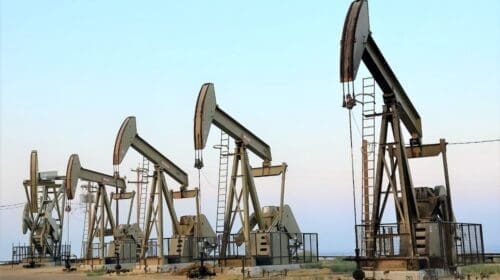The weekend brought sobering news with Saudia Arabia and other OPEC producers announcing a significant cut in oil production as soon as May. Pointing to a need to calm the market, the 60 percent global supplier, allied with Russia, holds a firm grasp on supply and demand. The decision, however, comes into play even after the oil and gas cartel speculated a 2.32 million barrel per day rise in the global market in response to China softening its COVID-19 policies.
Monday closed with a six percent increase in oil prices, and with crude being responsible for more than 50 percent of the cost to produce gasoline, pain is expected to loom at the pump. Additionally, higher prices could drive domestic refineries to relinquish assets directed at crude production, known as the refinery utilization rate. According to Bob Yawger, director of energy futures at Mizuho, the expected rate would be two percent lower than last year.
With current gasoline inventories pegged at 12.1 million barrels below last year’s statistics, capacity reduction driven by refiners could potentially influence a significant decrease in stock. Retail fuel prices could soar in response.
Looking Down the Road
Mark Finley serves as an energy expert at Rice University’s Baker Institute and indicated that retail gasoline prices could experience a 10-cent jump in response to a six percent increase in oil prices. According to AAA, domestic gas prices increased by 11.6 cents per gallon, leading to $3.506 per gallon. Citizens could expect a 50-cent per gallon increase with $100 barrel of oil this year alone.
“Oil is the major raw material that goes into gasoline,” said John Auers, managing director of Refined Fuels Analytics, a fuel advisory business.
With summer quickly approaching, increased vehicular traffic is expected, and that further increases demand. While fuel prices have historically increased due to summer travel, a for-sure lock on the notion, Matt Smith, an oil analyst at Americas Kpler, notes that OPEC cuts will ensure this reality.
“People that didn’t think we’re going to hit $4, better think again — $ a gallon is probably a given,” said Phil Flynn, senior market analyst with Price Futures Group, in an interview with FOX Business. “Whether we get to $5 is going to depend on a lot of things.”
Flynn added that refineries will see increased costs in bringing summer gasoline blends to the pumps. This will contribute to the overall decreased oil supply available in the market.
Effects on Domestic Oil
While possibilities of a recession loom, fear continues to linger as analysts point to a rise in fuel costs as a significant player in U.S. inflation during 2022. The welcome price decline that graced last year’s fourth quarter contributed to reduced inflationary pressure. Experts fear a substantial rise to $5 a gallon of gasoline at the pumps could propel core inflation.
Considering the United States produced 12.5 million barrels per day in January, the country outplays the figures with a 20.28 million barrel per day consumption rate. Consequently, the country remains a net importer of crude even though pump rates have been down for nearly 20 years.
Another contributing factor to the black gold equation is that U.S. shale tends to be lighter than the other grades preferred by refineries. This leads to the necessity of blending with oil extracted from other suppliers like Canada and South America and levies effects on shale. Shale producers have cut back on new projects as past losses remain frightening. The causes identified include governmental regulations and the demand for high-profit margins. While shale output is expected to rise by approximately 68,000 barrels per day, the reality remains that it is still less than 50 percent of the 141,000 barrel per day increase witnessed in August of 2022.
OPEC’s LEAD
Saudi Arabia leads OPEC in its reputation for being the largest producer of crude. However, the country has historically been a friend to the United States, although the relationship has been brushed aside lately. Its notion of cutting production suggests a potential drop in oil demand; however, that belief is not the opinion of all. Many expect demand to survive as China’s oil consumption grows.
Jim Krane works in energy research at Rice University’s Baker Institute. He noted that Saudi Arabia once provided a moderating effect on OPEC’s actions. He said the country has shifted in the past seven years and “has gotten more hawkish on prices.”
Nick Vaccaro is a freelance writer and photographer. In addition to providing technical writing services, he is an HSE consultant in the oil and gas industry with twelve years of experience. Vaccaro also contributes to SHALE Oil and Gas Business Magazine, American Oil and Gas Investor, Oil and Gas Investor, Energies Magazine and Louisiana Sportsman Magazine. He has a BA in photojournalism from Loyola University and resides in the New Orleans area. Vaccaro can be reached at 985-966-0957 or nav@vaccarogroupllc.com.
Oil and gas operations are commonly found in remote locations far from company headquarters. Now, it's possible to monitor pump operations, collate and analyze seismic data, and track employees around the world from almost anywhere. Whether employees are in the office or in the field, the internet and related applications enable a greater multidirectional flow of information – and control – than ever before.



















